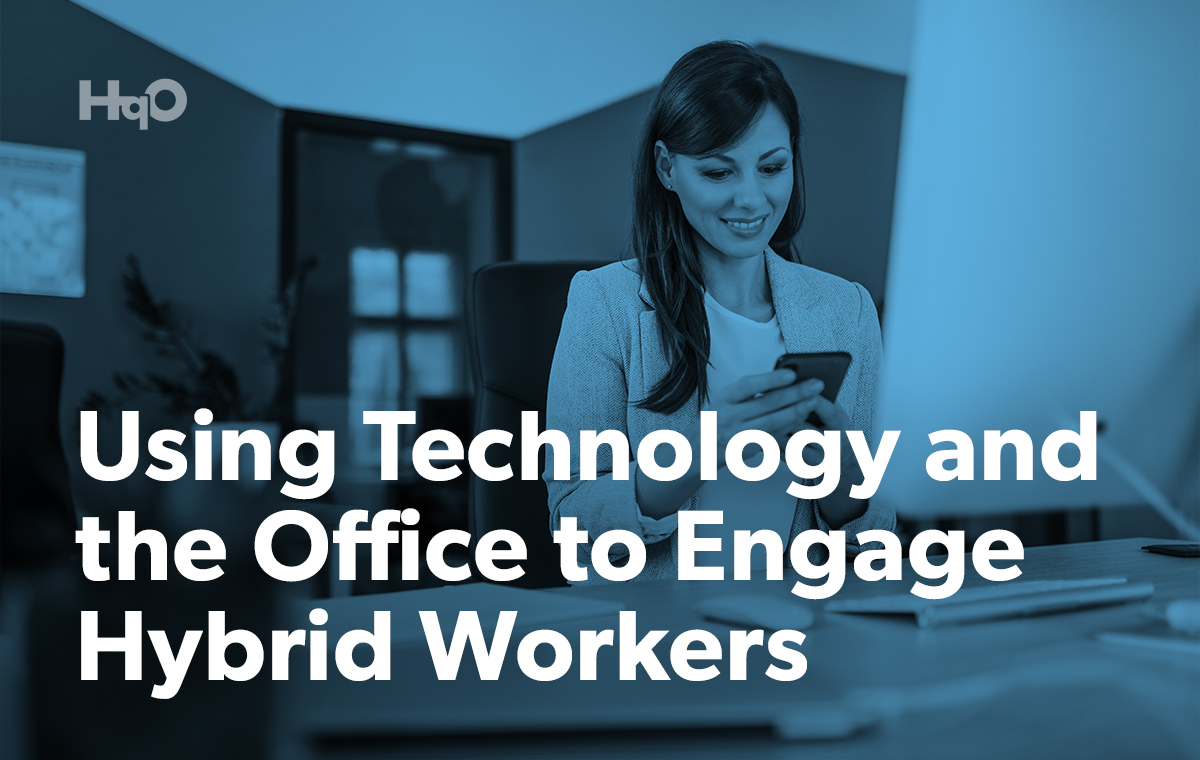Today, hybrid workplaces — that is: workplaces that blend remote and in-office work — are everywhere.
HqO’s State of Workplace Experience report, for example, finds that nearly all (86%) of today’s top employers use a flexible or hybrid working model. But the ubiquity of hybrid work doesn’t mean that it’s working. In fact, as the slow return to office continues, research indicates that a large number of today’s employees are dissatisfied with their office environments.
Recent data supports this. Leesman, an HqO company, just released their updated Quarter Two 2022 survey data. It reveals that almost 40% of workers do not believe that their offices create an enjoyable work environment, while another 38% do not believe their offices contribute to a meaningful sense of community. This is supported by a report from McKinsey, which finds that a “lack of support for employee health and well-being” is the fifth most common reason why employees leave their jobs without a new one in hand. Other factors like an “unsafe workplace environment,” “non-inclusive, unwelcoming, and disconnected community,” and “inadequate resource availability” all ranked within the top ten.
Making the Most out of Hybrid Work
But why should companies care about low office satisfaction rates?
Employers should pay attention to these figures because they show that the transition to hybrid work has been anything but smooth, especially as it pertains to getting employees to balance physical office space with their remote work environments. In fact, according to this data, a large number of employees now feel disconnected from and unsatisfied with their workplaces. This presents a serious problem for today’s employers, who won’t get the most out of their hybrid workers if those workers are unhappy with — and poorly served by — their office environments. Hybrid work can be a great tool for improving worker productivity and collaboration, but low office satisfaction rates threaten to undermine the effectiveness of hybrid work.
In other words: hybrid work only works when employees can leverage both office space and remote work spaces effectively.
Luckily for employers, workplace experience technology can help make hybrid work a success. By equipping employers with additional engagement tools — like mobile notifications and custom polling — workplace experience technology helps employers understand employee needs and behaviors while keeping hybrid workers happy and engaged with their physical and remote workplaces.
The Rise of Workplace Experience Technology
A growing number of companies are using workplace experience technology to address the challenges associated with hybrid work. HqO’s State of Workplace Experience report finds, for example, that 86% of today’s office landlords currently use — or will soon use — a workplace experience app at their properties to connect the workforce.
In this section, we’ll talk about how this technology works and explain why it’s so popular. We’ll also look at a few of the more specific ways that companies can use this technology to power hybrid success. If you’re new to workplace experience technology, you should consider downloading HqO’s free Introduction to Workplace Experience guide for a ground-level introduction.
Defining Workplace Experience Technology
Workplace experience technology is software that can be used to improve employee satisfaction and productivity.
This technology is most effective when it’s implemented as a single mobile app for the workplace that employees can download directly to their smartphones. Once the app is loaded onto an employee’s smartphone, the employee can use the app to order food; participate in workplace programming; engage with custom workplace events; and gain card-less mobile access to office spaces, among other benefits.
The Benefits of Workplace Experience Technology
Workplace experience technology empowers companies and their employees to manage their workplace experience. Think of it as a remote control, similar to a TV remote control: when executed well, it brings together all of the work functionalities and resources that hybrid employees need — no matter where they prefer to work. Specifically, workplace experience technology allows employers to do the following:
1) Do More With Fewer Applications
A report from Asana finds that the average U.S. employee changes through 13 apps, 30 times per day. According to HqO’s Office Insights report, 78% of employers believe that employees spend too much time switching between different office tools. By providing a unified digital solution, you can make your hybrid employees’ lives easier and more productive by consolidating multiple features and benefits into one app.
2) Create Deeper Connections
In the age of hybrid work, it can be hard for employers to foster a workplace culture and sense of community that many companies used to take for granted since employees can now work from anywhere. Workplace experience technology helps employers create deeper, more meaningful connections among their workforce by providing expanded opportunities for employee communication, in-office and remote programming, and much more.
3) Optimize the Office
Data collected from in-app polling and analytics features helps companies tailor their workplaces to meet the needs of modern employees by investing in the most popular programs and amenities, while simultaneously reducing investment in less popular amenities and spaces. This optimization allows companies to boost employee satisfaction, while also getting the most out of their spending on the workplace.
Interested in learning more? Download HqO’s Powering Success Guide now to understand how workplace experience technology makes hybrid work smoother and more productive.



